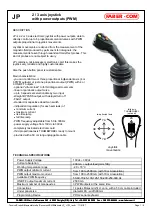
Installation | Operation Manual C 2214 |
13
5 Installation
The installation of the chlorinators usually is carried out according to the drawings of the planning department.
For exemplary installation diagrams see chapter 12.
Besides the possible local rules the Accident Prevention BGV D5 must also be observed. The installation must
be carried out by specialist staff as already small mistakes during installation may cause faulty metering or
even destroy the units.
Always use appropriate tools for the installation, for example when tightening the union nut a second wrench
must be used for counter-holding in order to avoid a distortion of the units. Otherwise mechanical stress may
cause damage of the components. Grease all threads slightly before assembly. Silicone grease is suitable for
this. In that case the threads can be unscrewed more easily even after a long operation time.
NOTICE!
Vaseline is not suited for lubricating chlorine system components. Because of its hygroscopic effect chlorine
gas extracts water out of the vaseline so that it hardens.
All units must be mounted in the position that is shown in the installation examples. Otherwise malfunction or
even damage of the units caused by liquid chlorine cannot be excluded.
5.1 Chlorine delivery
5.1.1 Limited delivery quantity
At 15 °C room temperature the constant volume of chlorine gas delivered per hour from one chlorine cylinder
must not exceed 1 % of the original contents. Otherwise the energy loss resulting from chlorine evaporation
may cause the risk of cylinder icing. Consequently an inadmissably high pressure loss in the chlorine cylinder.
Consequently, the maximum rate for e.g. a 65 kg cylinder is 650 g Cl2/h.
For higher metering capacities several chlorine cylinders must be connected as a so-called cylinder battery.
The vacuum regulator C 2214 may only be used for pressure batteries.
NOTE!
Chlorine evaporation in the pressure tank withdraws energy from the surrounding air which causes condensa-
tion on all components in the room. For protecting the equipment a room heating is therefore recommended
even during the summer.
5.1.2 Pressure batteries
Typical installation example:
Fig. 4: Schematic diagram of a pressure battery














































